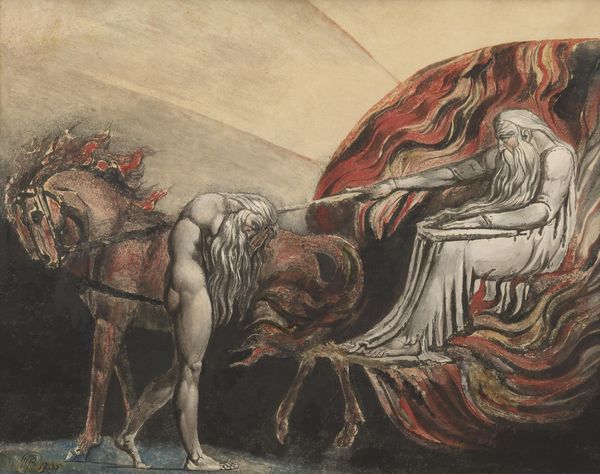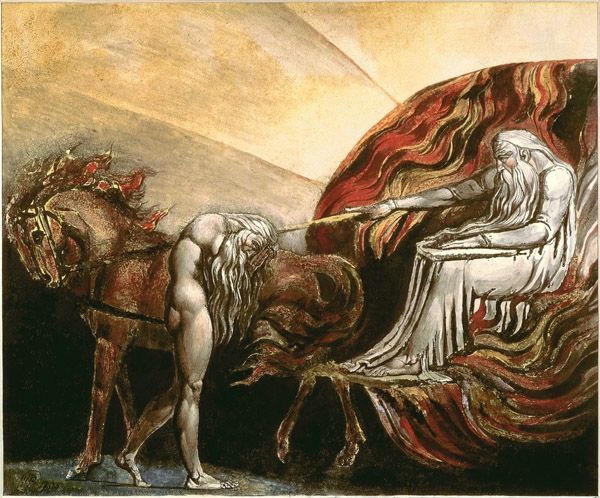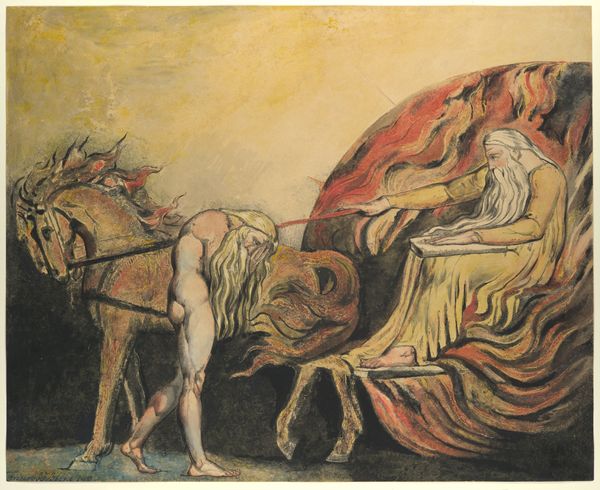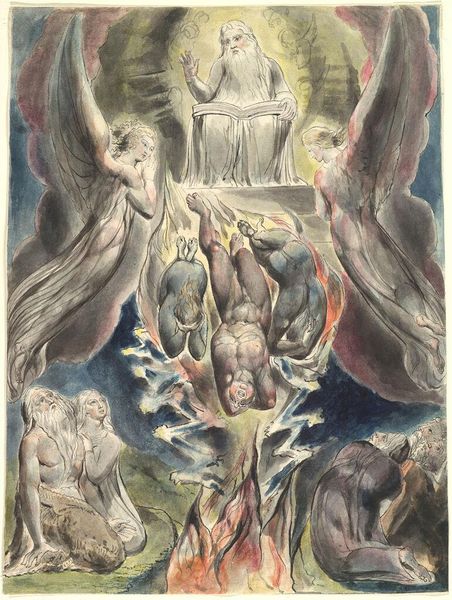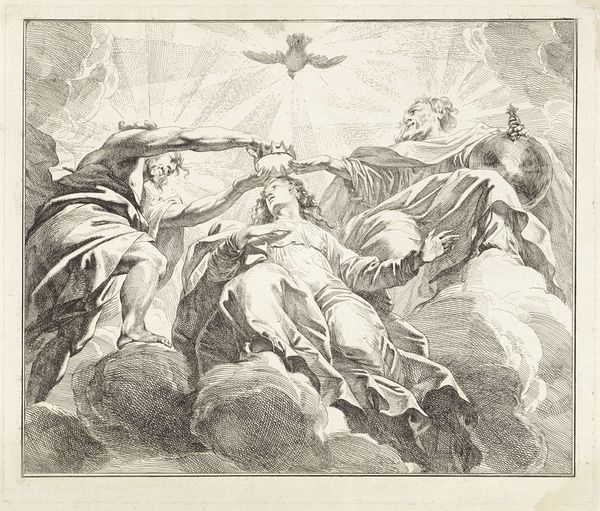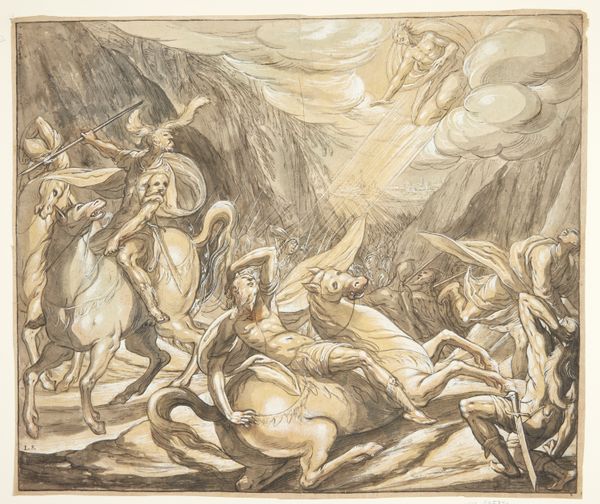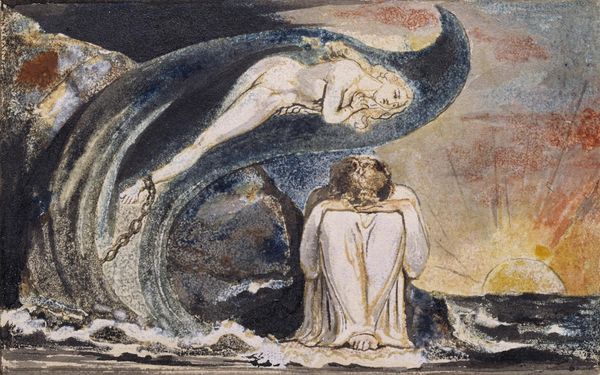
Dimensions: support: 432 x 535 mm
Copyright: CC-BY-NC-ND 4.0 DEED, Photo: Tate
Editor: So this is William Blake's *God Judging Adam*. There's no specific date, but it's currently housed at the Tate. I am immediately struck by the somber mood and almost theatrical composition. What do you see when you look at this piece? Curator: The arrangement of figures directs the eye immediately to the divine figure, but note how the artist has used the horse and Adam to create a strong diagonal line which leads to the point of judgement. Editor: That’s a great observation. So, the formal arrangement emphasizes the power dynamic? Curator: Precisely. Consider how the use of light and shadow further reinforces this hierarchy. The stark contrast draws attention to the central figures. What impact do you think the subdued palette has on the overall meaning? Editor: It definitely adds to the feeling of severity. I hadn't considered the use of light in that way, it makes the piece much more impactful. Curator: Indeed. It is through such formal elements that Blake conveys his complex theological ideas.
Comments
Join the conversation
Join millions of artists and users on Artera today and experience the ultimate creative platform.
tate 7 months ago
⋮
This is a hand-finished relief etching, printed on paper from a copper plate. The broken texture visible along the light grey outline of God's right arm was produced as the printing plate was lifted off the paper. Blake's figure of God resembles Urizen, a tyrannical law-maker in Blake's own mythology. God holds his sceptre in his right hand here but, because images are reversed during printing, Blake would have had to show it in God's left hand on the copper printing plate. Gallery label, September 2004
